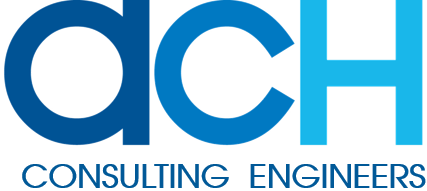macro-plastics to microplastics
fine tuning the treatment train approach to address a contaminant of emerging concern
Linda Norman of ACH Consulting for the NZ Stormwater Conference 2021
Urban stormwater runoff, since 1950, has contained steadily increasing volumes of plastic. 80% of plastics in the marine environment are derived from terrestrial sources. Stormwater runoff is the principal vector for plastics reaching the aquatic environment. During a rainfall event, plastics are washed into stormwater catchpits and urban streams.
Many of the plastics are straws, drink bottles, cup lids etc. referred to as macro-plastics. The longer a macro-plastic remains in the environment, the more it breaks down, becoming secondary microplastics (MP), defined as a particle with dimensions of <5 mm and > 1 µm. Secondary MP account for anywhere between 69% - 80% of MP in the ocean. Recently MP have been designated as a contaminant of emerging concern. MP are in most drinking water, present in 97% of all fish species in the South Pacific and are pervasive in our lakes and streams, impacting every part of the food chain from bacteria to mammals. MP cause reduced fecundity, lower immunity, reduced fitness, affecting blood chemistry, hormone levels and genetics. Human ingestion of shellfish in New Zealand includes ingesting between 920 – 4600 MP particles per annum.
Stormwater treatment of urban runoff targets metals and nutrients. Fine-tuning the treatment train of stormwater processes provides a feasible methodology for reducing the amount of plastic entering natural surface waters. Trapping macro-plastics prior to their entry into the stormwater system will reduce MP. Densely planted riparian margins, in-catchpit filters and vegetated swales all act as gross pollutant traps (GPT), trapping particles >5 mm. GPT are the front end of the treatment train, acting as a gate keeper for macro-plastics. With comprehensive maintenance programs GPT are highly effective at removal of macro-plastics prior to their becoming secondary MP.
Addressing MP in stormwater runoff prior to entry into natural waters requires a toolbox of methodologies, appropriate to the size and nature of the contributing catchment. Wetlands have historically provided a reliable part of the stormwater treatment train for larger catchments. However, constructed wetlands can contain anywhere between 85 -1100µg/m3 of MP and sufficient wetlands residence times are required (up to 10 days), if the trapped MP are not going to be discharged into surface waters. Increasing residence time is the best option, as it can increase the efficiency of MP removal to nearly 100%, as well as reducing total nutrients. Limited land availability can be an obstacle to designing wetlands with sufficient residence time. Where ideal residence times cannot be achieved other options must be explored.
For large catchments, further filtration at the wetland outlet, or a series of smaller wetlands, can provide more efficient MP removal. Bioretention systems run in series have the potential to provide comprehensive MP removal for large catchments. Subdividing large catchments into small subcatchments allows for the use of proprietary treatment devices downstream of GPT, filtering out MP prior to discharge into a reticulated stormwater network. This paper examines ways in which our current toolbox can be adjusted to address macro-plastics and MP for a variety of catchments.
About the Author
Linda Norman joined ACH Consulting Ltd after immigrating to New Zealand in 2006. She trained in the US as an oceanographer and environmental engineer. Having achieved degrees in Chemistry and Geology as well as an advanced degree in oceanography and marine geophysics, she has worked for NASA, Woods Hole Oceanographic Institution, US Geological Survey and others. A Scientist and an Engineer, she brings her multidisciplinary experience to engineering design.



